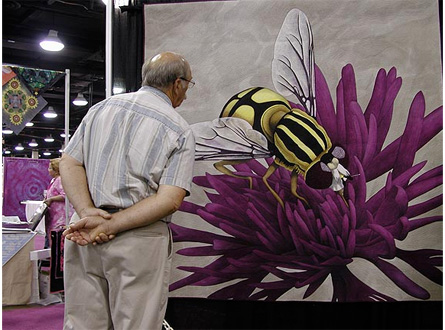
Jim Admires Visitor's Choice Quilt
As we were heading back to WV from GA in August 2006, we stopped at a favorite quilt shop for a few supplies. A number of excited women dropped in, talking about traveling to Nashville and the Quilt Show. Quilt Show? Well our trip home got sidetracked right then and there.
The Quilt Show was one of the three yearly conventions of American Quilt Society. The convention was held in the beautiful Gaylord Opryland Hotel in Nashville, TN. Since this was our second stay at the hotel, and in an effort to conserve resources, we booked the less expensive room with a view of the parking lot. However, when we got to our assigned room, our view was of the beautiful Delta Courtyard Atrium.
We are not members of the AQS, however, we wanted to see the show to view the latest quilt designs, meet the vendors, and increase our stash of quilt fabrics. We came away with several bundles of great fabrics, some new tools, and lots of business cards complete with web sites for shopping at home. We were surprised to see a vendor from Utah--where we lived for 20-years--and he was surprised to find someone in Tenn. that not only knew where Panguitch was, but how to pronounce the name like a native.